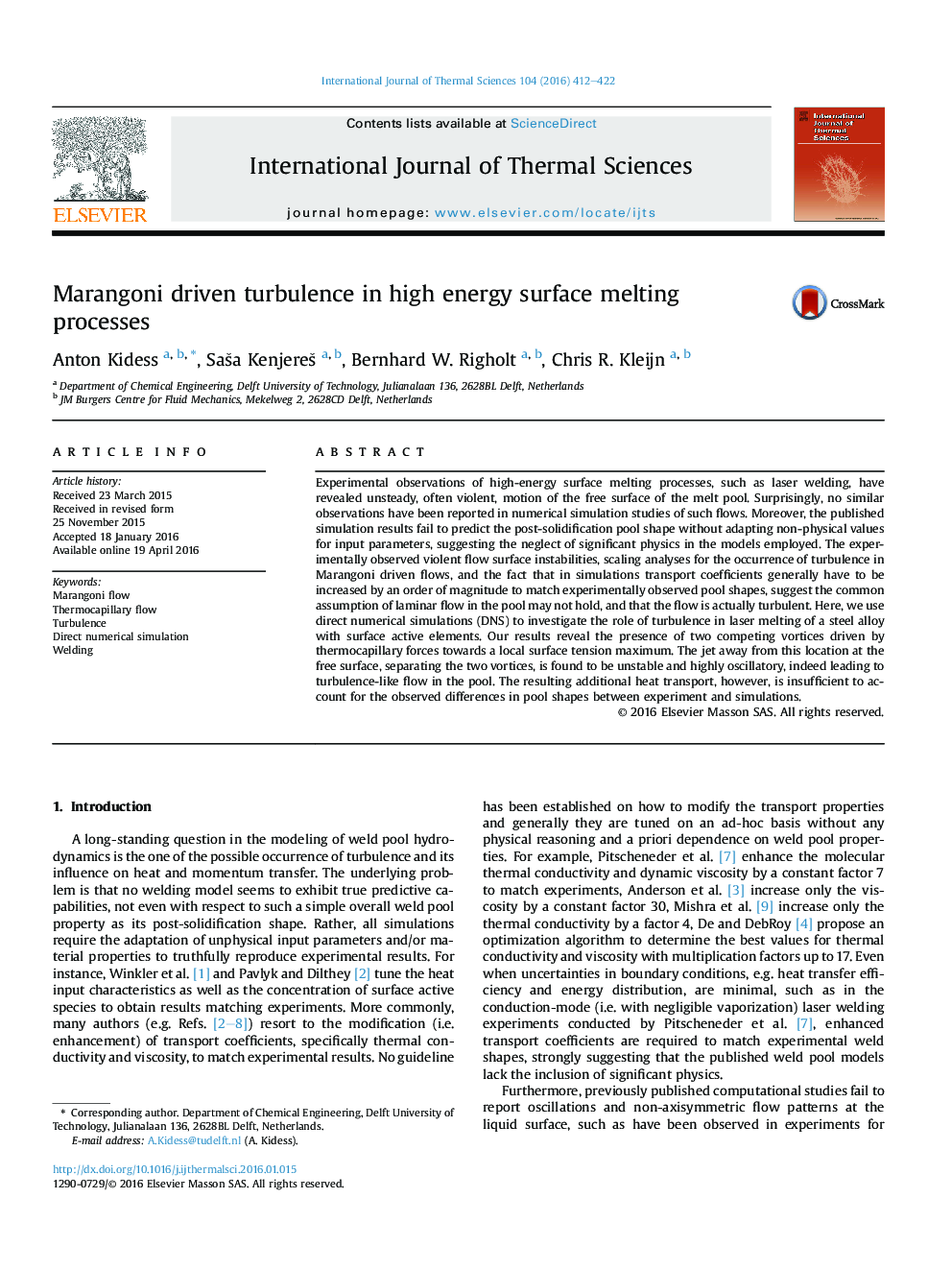| Article ID | Journal | Published Year | Pages | File Type |
|---|---|---|---|---|
| 667897 | International Journal of Thermal Sciences | 2016 | 11 Pages |
Abstract
Experimental observations of high-energy surface melting processes, such as laser welding, have revealed unsteady, often violent, motion of the free surface of the melt pool. Surprisingly, no similar observations have been reported in numerical simulation studies of such flows. Moreover, the published simulation results fail to predict the post-solidification pool shape without adapting non-physical values for input parameters, suggesting the neglect of significant physics in the models employed. The experimentally observed violent flow surface instabilities, scaling analyses for the occurrence of turbulence in Marangoni driven flows, and the fact that in simulations transport coefficients generally have to be increased by an order of magnitude to match experimentally observed pool shapes, suggest the common assumption of laminar flow in the pool may not hold, and that the flow is actually turbulent. Here, we use direct numerical simulations (DNS) to investigate the role of turbulence in laser melting of a steel alloy with surface active elements. Our results reveal the presence of two competing vortices driven by thermocapillary forces towards a local surface tension maximum. The jet away from this location at the free surface, separating the two vortices, is found to be unstable and highly oscillatory, indeed leading to turbulence-like flow in the pool. The resulting additional heat transport, however, is insufficient to account for the observed differences in pool shapes between experiment and simulations.
Related Topics
Physical Sciences and Engineering
Chemical Engineering
Fluid Flow and Transfer Processes
Authors
Anton Kidess, Saša Kenjereš, Bernhard W. Righolt, Chris R. Kleijn,
